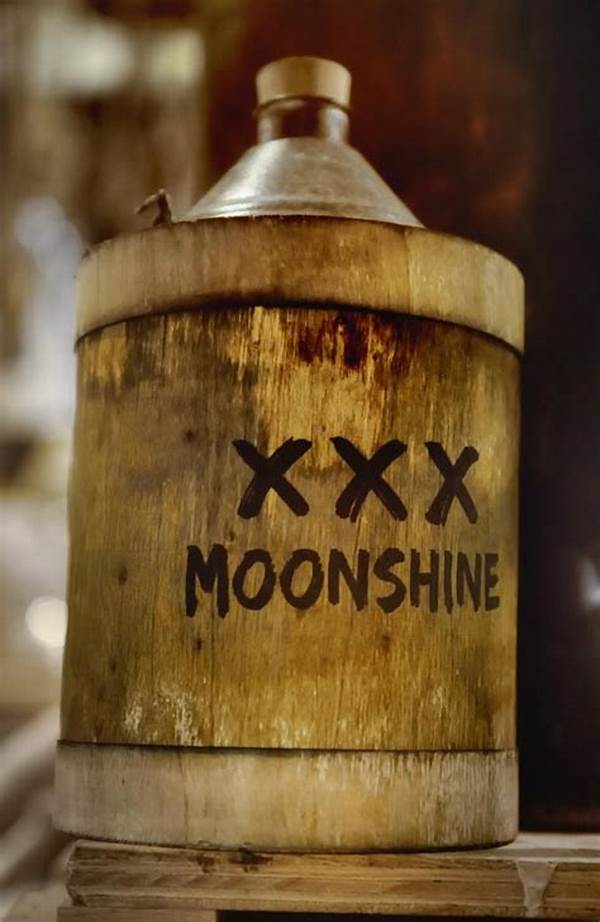
Evolution Of Moonshine Over Centuries
- Daniel Anderson
- 0
- Posted on
Moonshine, often shrouded in mystery and intrigue, has captivated the imagination of many over the centuries. With its roots buried deep in the annals of history, this illicit spirit has evolved significantly, weaving its way through the fabric of different cultures and societies. The evolution of moonshine over centuries showcases not only the adaptability of human ingenuity but also the ever-changing nature of cultural norms and legal landscapes.
Read Now : Repairing Damaged Personal Bonds
Moonshine’s Humble Beginnings and Transformation
Moonshine, in its original form, was the product of necessity and innovation. People crafted it in the dead of night to dodge taxes and government control, hence the name. Fast forward a couple of centuries, and this clandestine operation has taken on many forms. The evolution of moonshine over centuries highlights its journey from simple homemade brews to a symbol of rebellion.
In the early days, moonshine was all about survival and self-reliance. Farmers and folks in rural areas needed a way to make use of surplus grains, and moonshine was born. But as time ticked on, the evolution of moonshine over centuries saw it become a more sophisticated and widespread operation. Still illegal in many parts of the world, its allure has only grown.
Today’s moonshine isn’t just a backwoods operation. It’s celebrated in pop culture, and many legal distilleries produce their own twist on this age-old spirit. The evolution of moonshine over centuries has seen it become a cultural phenomenon, cherished by those who seek a taste of rebellion and history in every sip.
The Language of Moonshine: Understanding the Lingo
1. When we talk about “moonshine,” we’re diving into a world as diverse as ever. The evolution of moonshine over centuries has led to a myriad of terms and phrases that capture its essence.
2. In the hills and hollers, you might hear about “corn likker,” a nod to the evolution of moonshine over centuries and its reliance on corn mash.
3. Another term you might come across is “white lightning.” This reflects the raw, untamed spirit of the evolution of moonshine over centuries.
4. Folks down south may refer to moonshine as “hooch,” a testament to the rich history and evolution of moonshine over centuries.
5. And don’t forget “firewater,” a term that harks back to the fiery nature and evolution of moonshine over centuries.
Moonshine’s Lasting Legacy and the Slang of Its Time
The vibrant slang surrounding moonshine is as much a part of its history as the moonshine itself. When delving into the evolution of moonshine over centuries, one must appreciate the inventive ways people have described and embraced this unaged spirit. The language born out of moonshining is rich and colorful, painting a vivid picture of its cultural significance.
These slang terms developed during a time when moonshiners needed to communicate discreetly. They had to stay two steps ahead of the law, and language played a crucial role in maintaining their secrecy. The evolution of moonshine over centuries has preserved this colorful vernacular, offering a glimpse into the ingenuity and resilience of those who kept the tradition alive.
Read Now : Overcoming Major Life Challenges
Moonshine continues to inspire creativity, not just in the spirits industry but also in the language that surrounds it. As the evolution of moonshine over centuries unfolds, so too does the way it is communicated and celebrated. Its journey from illicit beginnings to cultural icon is a testament to the enduring allure of a drink that once thrived in the shadows but now proudly stands in the spotlight.
The Impact of Moonshine on Culture and Language
Moonshine, ever the rebel of the spirits world, has carved out a niche in culture that refuses to be ignored. The evolution of moonshine over centuries is not just about changes in production methods or legality, but also about its profound impact on the cultural landscape. The slang and phrases that have grown up around moonshine reflect this deeply ingrained presence.
Take “bootlegger,” for instance – a term born from the necessity of sneaky distribution during Prohibition, illustrating the sly art entwined with the evolution of moonshine over centuries. Terms like “still,” referring to the equipment used to make moonshine, add to the lexicon with stories of creativity and persistence. Meanwhile, “dry counties” echo the era of Prohibition and the ongoing legal battles surrounding moonshine.
Cultural elements such as music and film have also embraced moonshine’s legacy, further cementing its place in the societal lexicon. Songs sing about it, movies portray the danger and thrill, and the evolution of moonshine over centuries moves from generation to generation, carried by both the tongue and the bottle.
Moonshine: The Linguistic Journey
The slang associated with moonshine is as timeless as the beverage itself. As moonshine traversed through different eras, the evolution of moonshine over centuries became embedded not just in practice but also in vocabulary. Words and phrases emerged organically, providing us with a linguistic heritage that is as spirited as moonshine’s taste.
This unique language serves as a living history. Each term tells a story, each nickname captures a moment, and each phrase immortalizes an era. The language not only reflects the clandestine nature of moonshining but also its cultural influences, adapting and expanding as moonshine did.
A Slang Legacy Continued
In contemporary times, the evolution of moonshine over centuries is witnessed through its continued slang legacy. Language evolves, and moonshine slang has not been left behind. New generations incorporate old terms while initiating new ones, reflecting the ongoing cultural significance and adaptability of moonshine in our lives.
Thus, the story of moonshine isn’t just kept alive in those mason jars and hip flasks; it thrives in our words and continues to shape conversations. The evolution of moonshine over centuries is both an anthology of rebellion and an enduring testament to the power of language to capture the spirit of the times.